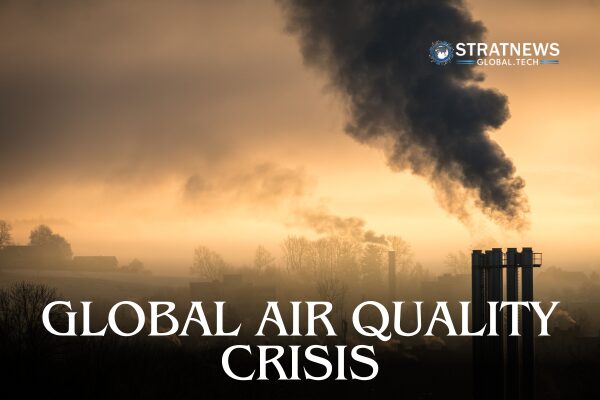Global Air Quality Crisis: Air Pollution Levels Remain Critically High
Only seven countries met the World Health Organization’s (WHO) air quality guidelines in 2024, according to data released on Tuesday. Researchers have warned that tackling global smog will become even more difficult following the United States’ decision to shut down its international air quality monitoring programme. Chad and Bangladesh recorded the highest pollution levels, with smog concentrations exceeding WHO standards by more than 15 times. The data, compiled by Swiss air quality monitoring firm IQAir, highlighted significant challenges in global air quality crisis.
Limited Countries Achieve Safe Air Quality Levels
According to IQAir, only Australia, New Zealand, the Bahamas, Barbados, Grenada, Estonia, and Iceland maintained air quality within WHO’s recommended limits. These nations successfully kept pollution levels under control, unlike many others where air quality remains hazardous.
A key concern in assessing global pollution is the lack of data, particularly in Asia and Africa. Many developing nations have depended on US embassy and consulate air quality sensors for reliable pollution tracking. However, the US State Department has recently ended this programme, citing budget constraints. As a result, over 17 years of air quality data, including crucial readings from Chad, were removed from the US government’s air monitoring website, airnow.gov.
Impact of US Programme Closure on Global Air Monitoring
The shutdown of the US monitoring initiative is expected to have severe consequences, especially for African countries where alternative data sources are scarce. Christi Chester-Schroeder, air quality science manager at IQAir, noted that this move would significantly impact public access to real-time pollution data in many regions.
Chad, which was left out of IQAir’s 2023 pollution rankings due to insufficient data, returned to the top of the list in 2024. The country, heavily affected by Sahara Desert dust and uncontrolled crop burning, recorded an average PM2.5 concentration of 91.8 micrograms per cubic metre (mg/cu m), slightly above 2022 levels. WHO guidelines recommend a maximum of 5 mg/cu m, a target achieved by only 17% of global cities last year.
India Among the Most Polluted Countries
India ranked fifth in the 2024 pollution rankings, following Chad, Bangladesh, Pakistan, and the Democratic Republic of Congo. While India’s average PM2.5 levels dropped by 7% to 50.6 mg/cu m, the country still accounted for 12 of the 20 most polluted cities. Byrnihat, an industrial town in northeast India, recorded the highest pollution levels, averaging 128 mg/cu m.
Climate change is increasingly driving up pollution levels, Chester-Schroeder warned. Rising global temperatures have intensified forest fires across South East Asia and South America, worsening air quality in many regions.
Christa Hasenkopf, director of the Clean Air Program at the University of Chicago’s Energy Policy Institute (EPIC), stressed that at least 34 countries will lose access to reliable air pollution data following the closure of the US programme. The initiative had played a crucial role in improving air quality in monitored cities, even boosting life expectancy and reducing hazard allowances for US diplomats.
Hasenkopf called the programme’s termination “a giant blow to air quality efforts worldwide.”
With inputs from Reuters


